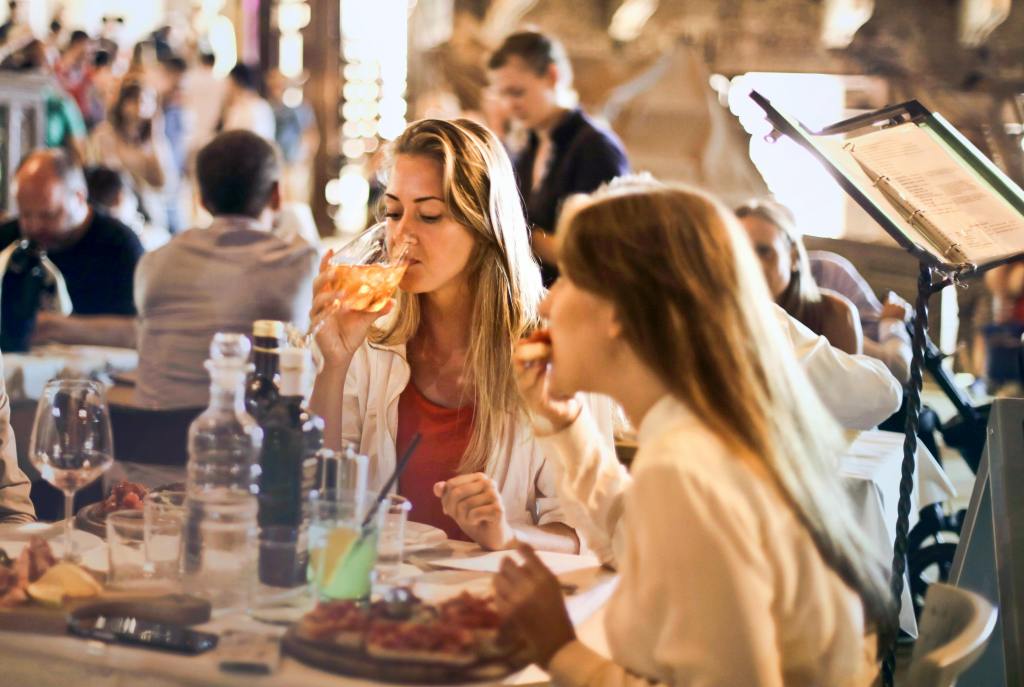
When you’re considering opening a restaurant in the UK, the first step is to conduct thorough market research. You’ll need to understand customer preferences, dining habits, and emerging food trends to position your restaurant effectively. Once your market research is complete, developing a solid business plan is essential. This plan should cover your target market, financial projections, staffing plan, and funding options. Don’t forget to comply with all legal requirements, like securing the necessary licenses and prioritizing food hygiene. But how do you choose the perfect location and craft a menu that stands out? Let’s explore the next steps.
Market Research
Before you venture into the restaurant business, conducting thorough market research is essential to understanding your target audience and competition. Start by analyzing customer preferences; knowing what your potential customers love to eat will help you tailor your menu and services. Look into local dining habits, popular cuisines, and emerging food trends.
Next, assess the competitive landscape. Identify existing restaurants in your chosen area, their strengths, and weaknesses. This will help you spot opportunities and areas where you can differentiate your restaurant. Pay attention to their pricing, customer reviews, and unique selling points.
It’s also vital to stay updated on industry trends. The restaurant industry is dynamic, with new trends emerging regularly. For instance, there’s a growing demand for sustainable and locally-sourced ingredients. Keeping an eye on these trends can give you a competitive edge.
Understanding your target demographics is another key aspect. Who are your ideal customers? Are they young professionals, families, or retirees? Market segmentation will help you define these groups and tailor your marketing efforts accordingly. By focusing on these elements, you’ll be well-equipped to carve out a niche in the bustling restaurant market.
Business Plan
Creating a thorough business plan is essential for ensuring your restaurant’s success and attracting potential investors. Start by defining your target market. Who are your ideal customers, and what’re their preferences? Understanding this will guide your menu development, pricing strategy, and marketing efforts.
Next, develop detailed financial projections. Estimate your startup costs, including equipment, lease deposits, and initial inventory. Forecast your monthly expenses and revenue for the first year, ensuring you account for seasonal fluctuations. This won’t only help you manage your finances but also demonstrate to investors that you have a solid grasp of your financial needs.
Your staffing plan is another critical component. Outline the roles you need to fill, from chefs to waitstaff, and detail your hiring strategy. Consider training programs and employee retention plans to maintain a high-quality team.
Explore various funding options to secure the necessary capital. Whether it’s personal savings, bank loans, or investor contributions, clearly state how you’ll fund your restaurant and manage cash flow.
Legal Requirements
Once your business plan is set, it’s time to navigate the legal requirements to make sure your restaurant operates smoothly and compliantly in the UK.
First, secure the necessary licensing requirements, including a premises license and a food business registration. You’ll also need an alcohol license if you plan to serve drinks. These licenses guarantee you’re legally allowed to operate and serve food and beverages.
Next, prioritize food hygiene by adhering to the Food Standards Agency guidelines. Regular health inspections will be conducted to verify cleanliness, food storage, and preparation practices. To stay compliant, ensure your kitchen staff is well-trained in food safety protocols.
Employee contracts are another critical aspect. Draft detailed contracts that cover job roles, salaries, working hours, and termination conditions. This not only protects your business but also fosters a clear understanding between you and your employees.
Don’t overlook fire safety. Install fire alarms, extinguishers, and emergency exits per local fire safety regulations. Conduct regular fire drills to ensure your staff knows the evacuation procedures.
Location and Leasing
Selecting the appropriate location is essential for your restaurant’s success, directly influencing foot traffic, customer demographics, and overall profitability. Start with a thorough neighborhood analysis to understand the area’s character, competition, and target audience. Analyzing the neighborhood helps you identify opportunities and potential challenges.
Next, begin a detailed property search. You’ll want to explore various sites, considering factors like visibility, accessibility, and proximity to key amenities. Conduct site visits to get a real feel for each location and assess its condition and potential.
Rent assessment is important. Compare rents in different areas to make sure you’re getting a fair deal without compromising your budget. Here’s what you should focus on:
- Foot Traffic: High foot traffic areas can drive more customers.
- Demographics: Make sure the local population aligns with your target market.
- Competition: Be aware of nearby restaurants and their offerings.
- Accessibility: Easy access for customers and suppliers is essential.
Menu Development
Crafting a compelling menu is pivotal for capturing your target audience and guaranteeing repeat business. Start by focusing on seasonal ingredients to keep your offerings fresh and relevant. This not only enhances flavor profiles but also reduces costs, as seasonal produce is often cheaper and more abundant.
Consider dietary preferences and offer a variety of options to cater to vegetarians, vegans, and those with food allergies. This inclusivity can greatly broaden your customer base. Be mindful of portion sizes; they should be satisfying but not excessive, balancing customer satisfaction with cost efficiency.
Your kitchen equipment should align with your menu. Invest in tools that enhance efficiency and consistency, allowing your chefs to execute dishes flawlessly. Here’s a quick reference table to guide your menu development:
| Aspect | Key Considerations | Action Steps |
|---|---|---|
| Seasonal Ingredients | Availability, cost, and flavor | Source local farms and markets |
| Dietary Preferences | Vegetarian, vegan, gluten-free, allergies | Include diverse menu options |
| Portion Sizes | Balance between satisfaction and cost | Test and adjust based on feedback |
| Flavor Profiles | Complementary tastes and textures | Experiment with spices and combinations |
| Kitchen Equipment | Compatibility with menu requirements | Invest in versatile, high-quality tools |
Strategic planning in these areas ensures your menu not only appeals to your target audience but also runs smoothly in your kitchen.
Marketing Strategies
Effective marketing strategies are essential for driving foot traffic and establishing a strong brand presence in the competitive restaurant industry. To make sure your restaurant stands out, you need to focus on several key areas.
- Online Presence: Create a professional website and keep your Google My Business profile updated. Guarantee your website is mobile-friendly and features high-quality images of your dishes. Online reviews are vital, so actively encourage satisfied customers to leave positive feedback.
- Social Media: Utilize platforms like Instagram, Facebook, and Twitter to showcase your menu, share behind-the-scenes content, and announce special events. Consistent posting and engaging with your followers can build a loyal community around your brand.
- Influencer Partnerships: Collaborate with local influencers to reach a broader audience. Influencers can provide authentic reviews and share their dining experience with their followers, driving new customers to your restaurant.
- Loyalty Programs: Implement a loyalty program to reward repeat customers. Offer discounts, free items, or exclusive access to special events. This not only encourages repeat visits but also fosters a sense of community and belonging.
Frequently Asked Questions
How Do I Manage Restaurant Staff Effectively?
To manage restaurant staff effectively, prioritize effective communication, implement training programs, and focus on staff motivation. Delegate roles efficiently and invest in team-building activities to foster a cohesive, productive work environment.
What Are the Best Practices for Maintaining Food Hygiene?
To maintain food hygiene, prioritize personal hygiene, establish strict cleaning schedules, implement pest control measures, guarantee safe storage of ingredients, and conduct regular food inspections. This strategic approach helps protect your customers and your restaurant’s reputation.
How Can I Ensure a Good Customer Experience?
To guarantee a good customer experience, focus on menu design, comfortable seating arrangements, and friendly customer interaction. Create a welcoming ambiance and implement loyalty programs to encourage repeat visits. Strategic planning in these areas is key.
What Technology Should I Invest in for My Restaurant?
You should invest in POS systems, kitchen automation, online reservations, digital menus, and inventory management. These technologies streamline operations, boost efficiency, and enhance customer experience, ensuring your restaurant stays competitive and runs smoothly.
How Do I Handle Customer Complaints and Feedback?
To handle customer complaints and feedback, invest in empathy training for staff, establish efficient feedback channels, and conduct regular customer surveys. Prioritize quick response time and implement effective complaint resolution strategies to enhance customer satisfaction.
Conclusion
Opening a restaurant in the UK demands strategic planning and attention to detail. Conduct thorough market research to understand your audience, then craft a robust business plan.
Make sure you meet all legal requirements, from licenses to food hygiene. Choose a location with strong foot traffic and minimal competition.
Develop a menu that uses seasonal ingredients and caters to diverse dietary preferences. With a solid marketing strategy, you’ll be well on your way to restaurant success.
source https://etakeawaymax.co.uk/how-to-open-a-restaurant-in-uk/



















